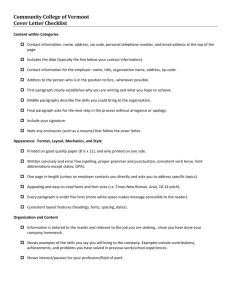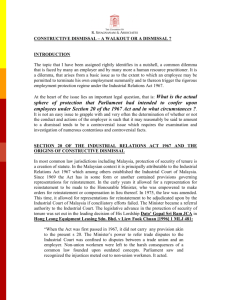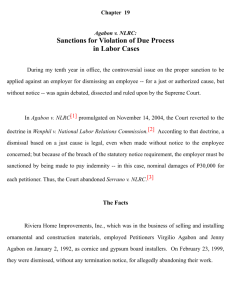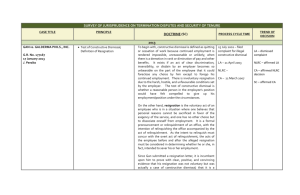File - Law Students' Legal Advice Program
advertisement
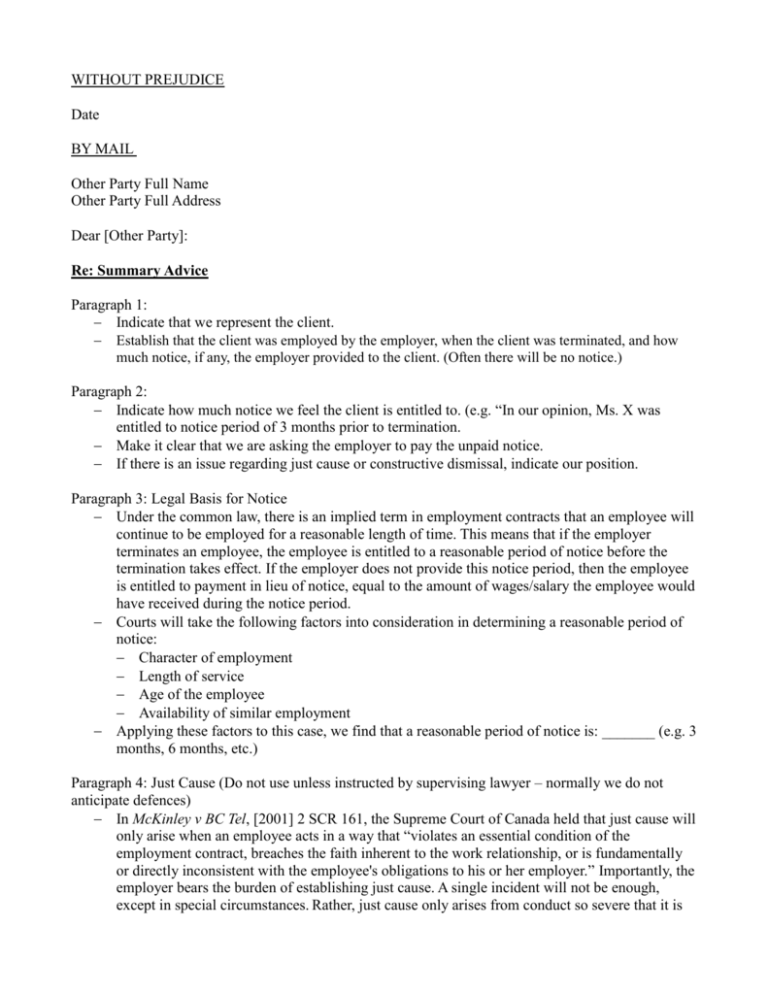
WITHOUT PREJUDICE Date BY MAIL Other Party Full Name Other Party Full Address Dear [Other Party]: Re: Summary Advice Paragraph 1: Indicate that we represent the client. Establish that the client was employed by the employer, when the client was terminated, and how much notice, if any, the employer provided to the client. (Often there will be no notice.) Paragraph 2: Indicate how much notice we feel the client is entitled to. (e.g. “In our opinion, Ms. X was entitled to notice period of 3 months prior to termination. Make it clear that we are asking the employer to pay the unpaid notice. If there is an issue regarding just cause or constructive dismissal, indicate our position. Paragraph 3: Legal Basis for Notice Under the common law, there is an implied term in employment contracts that an employee will continue to be employed for a reasonable length of time. This means that if the employer terminates an employee, the employee is entitled to a reasonable period of notice before the termination takes effect. If the employer does not provide this notice period, then the employee is entitled to payment in lieu of notice, equal to the amount of wages/salary the employee would have received during the notice period. Courts will take the following factors into consideration in determining a reasonable period of notice: Character of employment Length of service Age of the employee Availability of similar employment Applying these factors to this case, we find that a reasonable period of notice is: _______ (e.g. 3 months, 6 months, etc.) Paragraph 4: Just Cause (Do not use unless instructed by supervising lawyer – normally we do not anticipate defences) In McKinley v BC Tel, [2001] 2 SCR 161, the Supreme Court of Canada held that just cause will only arise when an employee acts in a way that “violates an essential condition of the employment contract, breaches the faith inherent to the work relationship, or is fundamentally or directly inconsistent with the employee's obligations to his or her employer.” Importantly, the employer bears the burden of establishing just cause. A single incident will not be enough, except in special circumstances. Rather, just cause only arises from conduct so severe that it is inconsistent with the continuation of the employment relationship because it constitutes a fundamental breach going to the root of the contract. Analyze the client's facts in light of this law and argue why there was no just cause. You may also wish to examine relevant cases. Depending on the facts, you may wish to discuss just cause sooner in the letter. Paragraph 5: Constructive Dismissal (Do not use unless instructed by supervising lawyer – normally we do not anticipate defences) Even if an employer has not expressly terminated an employee, there are some situations where the law will imply termination. This is called “constructive dismissal.” Constructive dismissal can occur when an employer fundamentally changes the employment contract. For example, if an employer significantly reduces the responsibilities, status or salary of the employee, this may result in constructive dismissal. Analyze the client's facts. It may be useful to research similar cases. Depending on the facts, you may wish to discuss constructive dismissal sooner in the letter. Paragraph 6: Repeat how much money we are asking for. If our client does not receive this money within 14 days, she will file a claim against you in the Small Claims Division of the BC Provincial Court without further notice. Please direct any correspondence on this matter to: Law Students' Legal Advice Program Attn: YOUR NAME 1822 East Mall, Room 129 University of British Columbia Vancouver, BC V6T 1Z1 If you have any questions or comments, please do not hesitate to contact the Law Students' Legal Advice Program office at 604-822-5791. When calling, inform that you wish to speak to YOUR NAME. Please note we do not represent your legal interests. We strongly advise that you seek independent legal advice. Sincerely, Law Students’ Legal Advice Program Per: YOUR NAME Law Student




